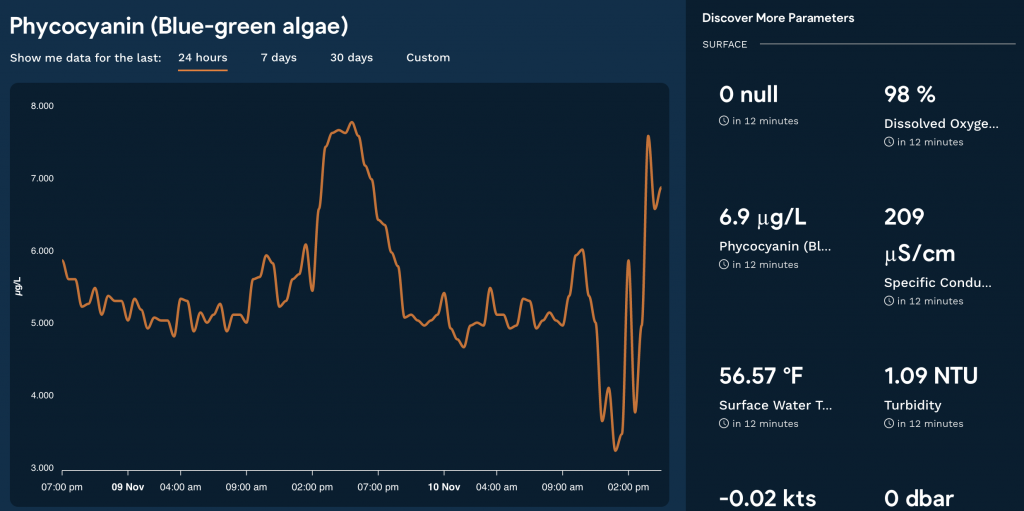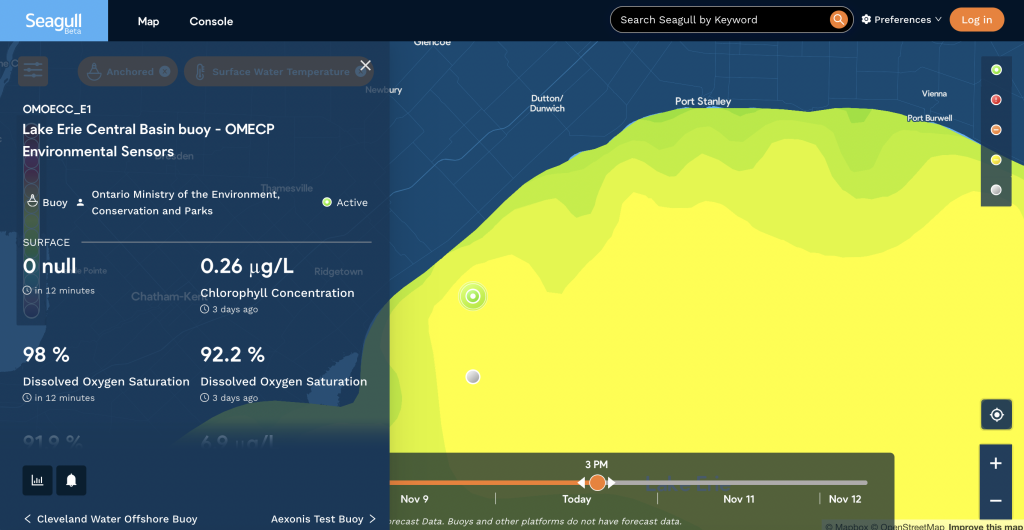Platform operators will soon have a simpler, stabler, more secure way to share data from their buoy or other observing platform with the rest of the observing community: by sending it directly to Seagull.
Part of the backend innovation that has GLOS and partners excited about this new platform is the ability to send data from a data logger, for example, on a buoy, to the Seagull cloud, without any processes in the middle.

In the past, data has flowed to GLOS servers via file transfer protocol (FTP), which essentially means that for Barb, a buoy operator, to share data, it went like this:
- Barb’s Buoy sends data to Barb’s computer.
- Barb’s computer processes the data and sends it to a shared folder on GLOS’ server.
- GLOS unpacks that file, formats it, and stores it.
- GLOS displays it on an app, like GL Buoys.
This worked well most of the time, and is still how almost all the observing system shares data, but it has a few drawbacks, including being more easily hacked or spoofed and more prone to outages if the data provider’s computer goes down, or if GLOS servers have a rough day.
Now, in Seagull, data can be sent directly, using the much more secure data transfer method called HTTPS—the same way your web browser ensures you are visiting real, secure websites. So data flows more like this:
- Barb’s buoy sends data to Seagull and, optionally, to her own computer.
- Seagull displays the data on the web app.
Once sent, the data can be processed, stored, and displayed thanks to Seagull’s resilient, scalable cloud infrastructure.
This year, to help begin the transition to Seagull, GLOS funded three new HTTPS-capable data loggers for a Lake Erie buoy from the Ontario Ministry of Environment, Conservation, and Parks.
“The data from this buoy helps us understand the nature of adverse water quality events, monitor and respond to these events, and assess the need for additional monitoring or studies in the area,” said Michael Taché, a lead technologist with the ministry.
Taché and the rest of the ministry team operate four buoys and wanted to connect them to GLOS to make their data accessible to more people.
They still send a copy of the data to their own system, but if they ever have issues, or if others outside the organization want to access real-time info, they can easily use it through Seagull, making this buoy much more resilient and valuable to the team and community.
And this highly capable buoy already has logged several years of extremely practical, valuable data for researchers on both sides of the border.
“Recently staff at NOAA used the data from this buoy to develop a forecast model for Lake Erie and predict events that bring low-oxygen water closer to shore and water intakes,” said Taché. “The movement of deep low-oxygen water surface by currents has contributed significantly to fish deaths in the past and is associated with elevated levels of manganese and higher acidity which impact drinking water intakes and treatment.”

As the first direct Seagull connection, the process was anything but simple. The GLOS team worked with the ministry team to map each parameter of sensor-packed buoy to Seagull’s library of standard names, write some custom code, and then troubleshoot till all the data came in seamlessly.
The result? Now the GLOS team is ready to connect easily to other buoys with similar data loggers, and the expansion of Seagull into this new, more secure, more stable future underway.
“While challenging, it was a wonderful experience to work with the Ontario Ministry in getting their data directly into Seagull,” said Joe Smith, GLOS Cyberinfrastructure Engineer. “We worked through many issues, expected and unexpected, to establish a watertight connection from a common data logger to Seagull.”
Next the GLOS team will continue to streamline the process and work with partners to establish direct-to-Seagull connections for buoys, sondes, and many other observing platforms.
Curious about connecting yours? Email support@glos.org.
